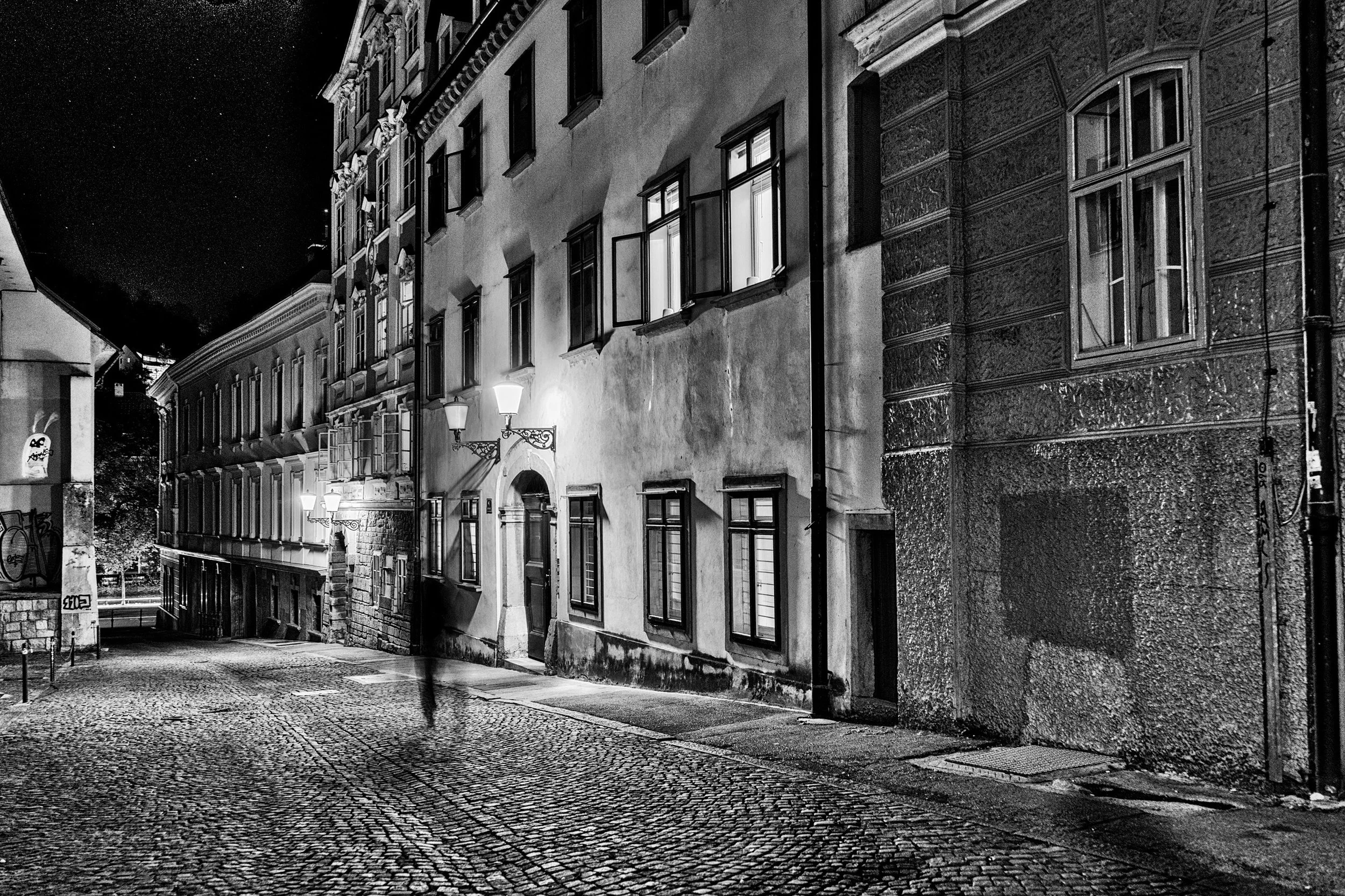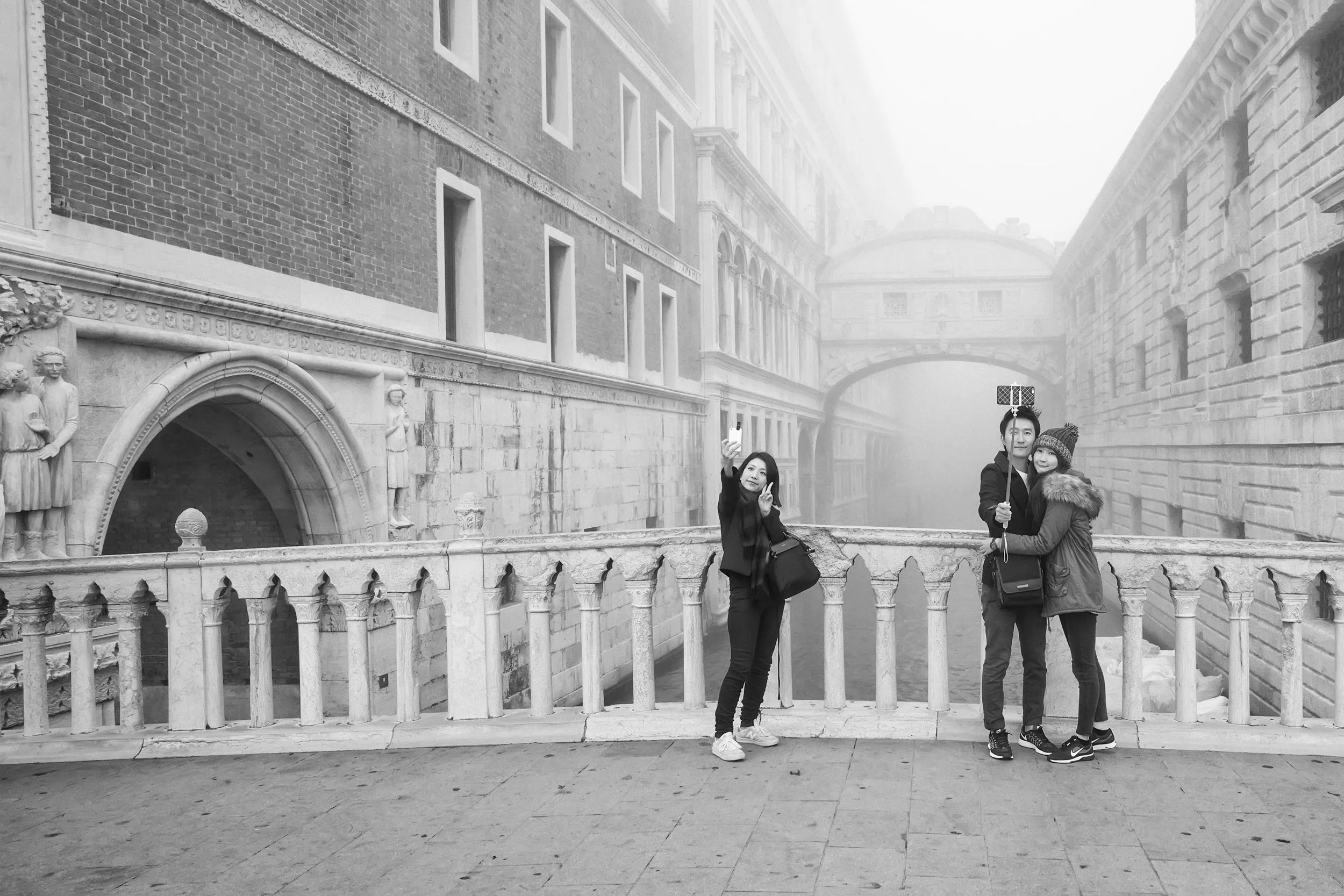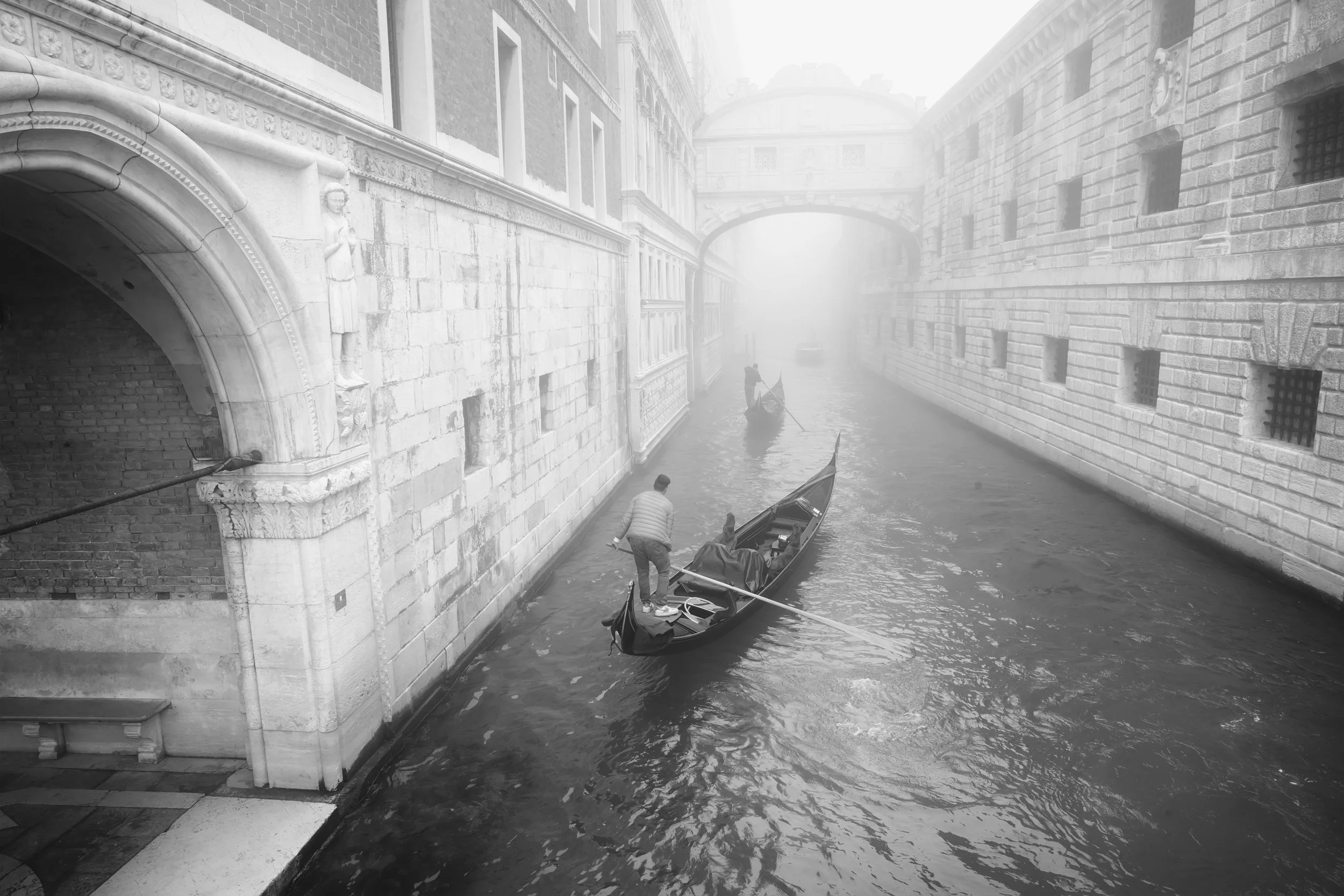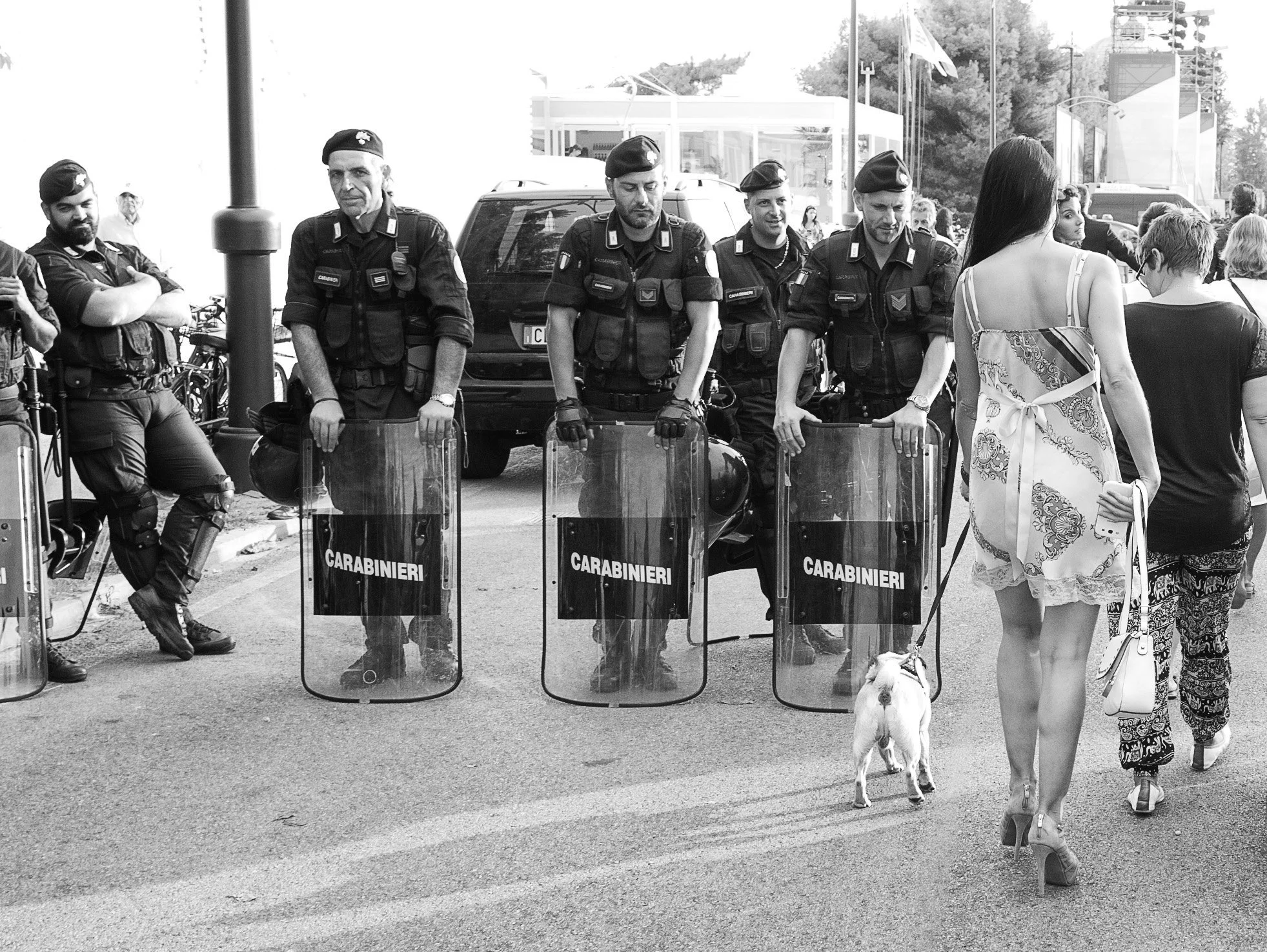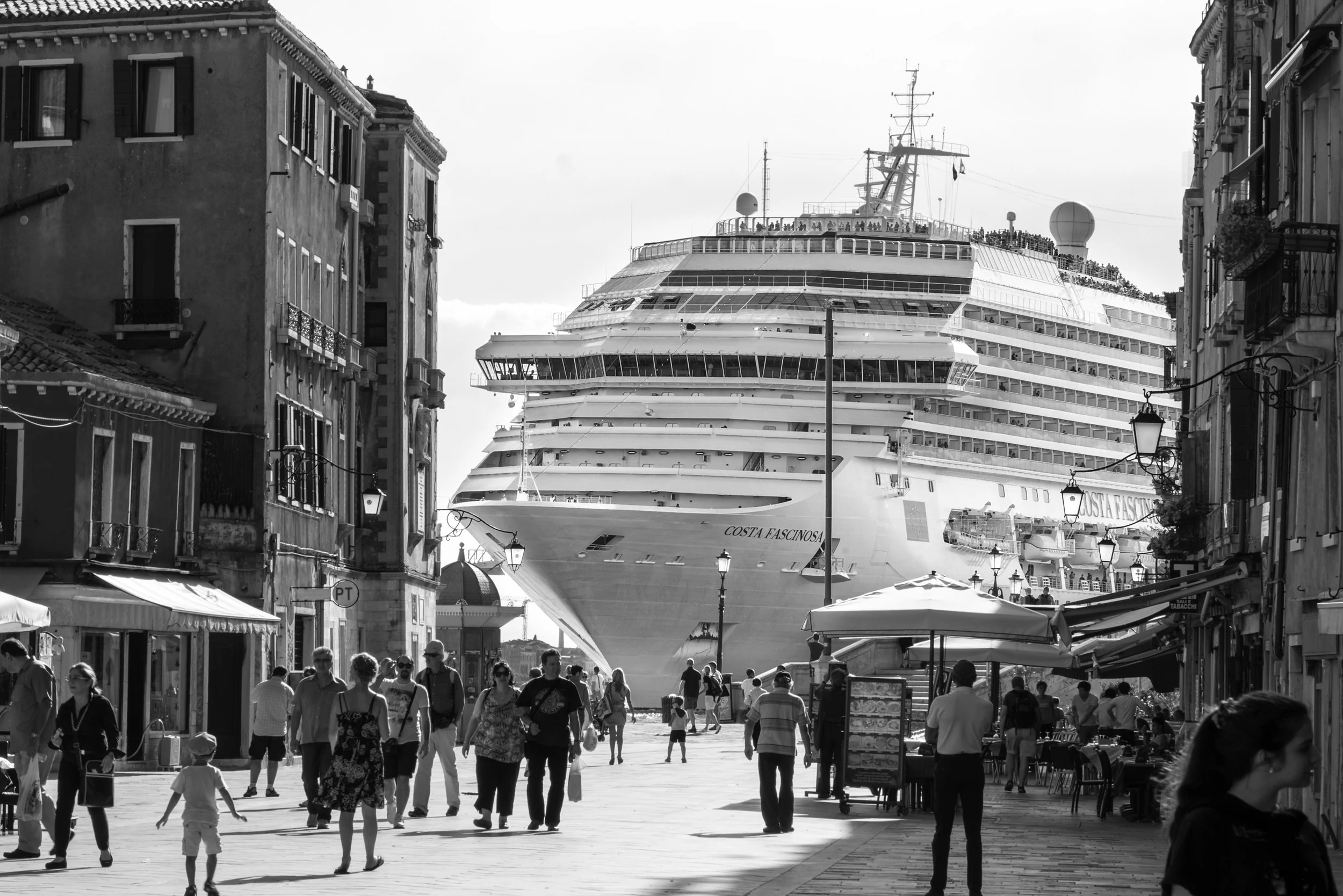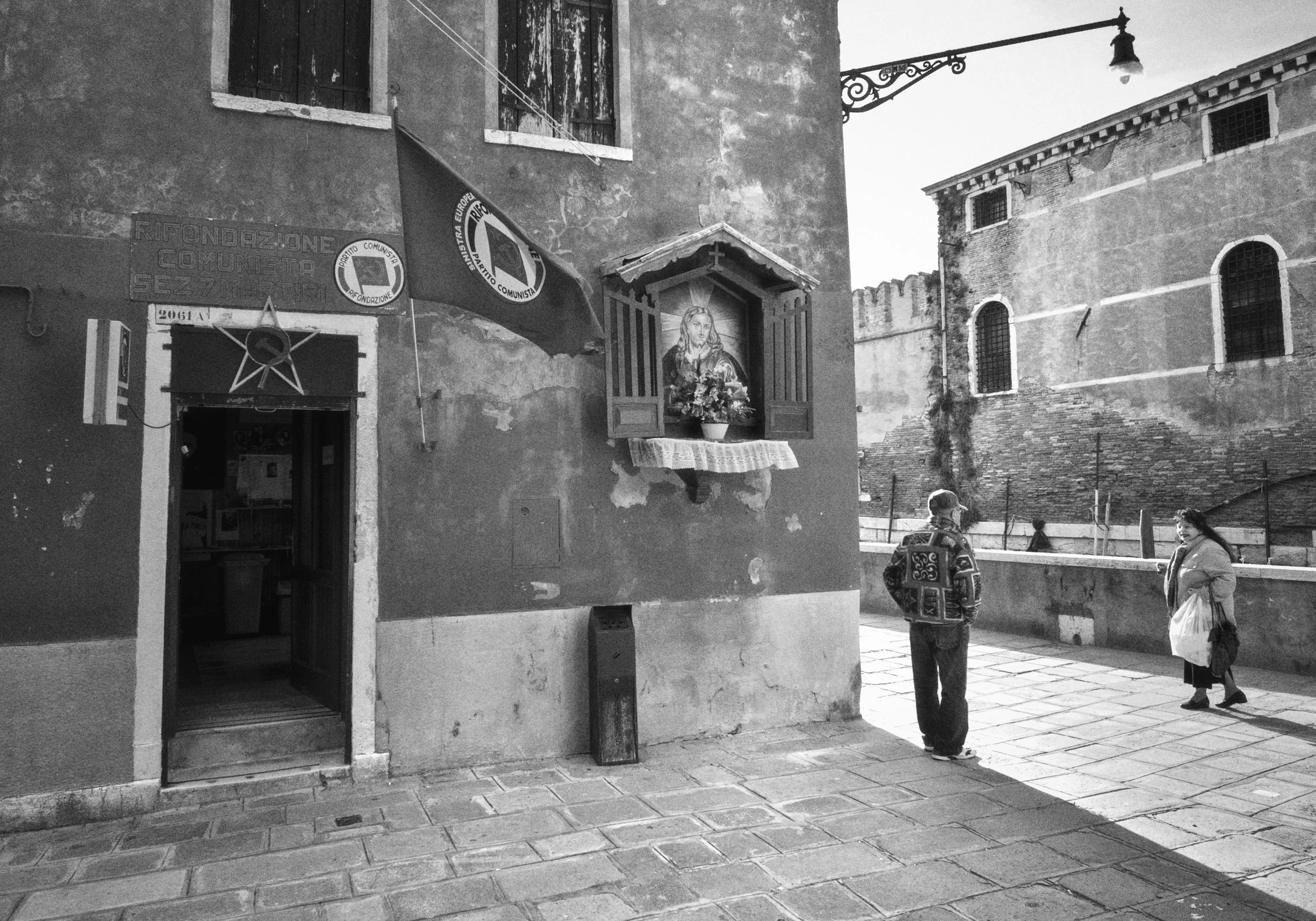Interview with Marco Secchi
Marco Secchi is an accomplished photographer renowned for documenting the UK Royal family with a thoughtful balance of access and ethics. Capturing moments that are both intimate and grandiose, Marco Secchi ensures personal boundaries are respected while telling compelling visual stories.
After relocating to Ljubljana, Marco presented a black and white photography exhibition offering a fresh, minimalist perspective of the city. By focusing on light and shadow, the absence of color invited viewers to engage more deeply with composition and emotion.
A staunch advocate for medium format film photography, Marco values the tactile experience and intentional that film brings to the craft. This approach fosters a mindful and disciplined practice in contrast to the instant nature of digital photography.
Through personalized one-to-one workshops, Marco mentors photographers of all levels. By tailoring instruction to individual needs and encouraging exploration, participants discover and refine their unique styles without imposed methods.
Embracing platforms like the Fediverse and Flipboard, Marco prioritizes meaningful engagement and authentic connections over superficial social media interactions. This strategy enriches community involvement and enhances visual storytelling.
Committed to the value of physical prints, Marco believes that real photography deserves to be manifested in tangible artworks. Physical prints offer a deeper connection between the viewer and the image, surpassing the experience of digital displays.
Navigating the ethical complexities of photojournalism with high-profile subjects, Marco adheres to principles of respect and integrity. By making conscientious decisions about what to share, visual narratives inform the public without compromising the well-being of those photographed.
Looking ahead, Marco embraces the fusion of traditional film techniques with modern technology. By adapting artistic practices and staying innovative, he maintains the authenticity and uniqueness that define his work in a rapidly evolving market.
In your tenure as a photographer documenting the UK Royal family, you have balanced between access and ethics, capturing moments that are both intimate and grandiose. Could you elaborate on the methodological challenges you face when trying to portray the inherent dichotomy of private lives lived in public spheres? How do you ensure that your artistic vision respects personal boundaries while still telling a compelling story?
Balancing the right to report with respect for personal privacy is a fundamental principle that guides my work as a photographer, especially when documenting figures like the UK Royal family. Whether photographing ordinary individuals, celebrities, or royals, ethical considerations must always take precedence over the allure of capturing sensational images.
One methodological challenge I frequently face is determining where to draw the line between public interest and personal intrusion. For instance, during the Highland Games several years ago, I photographed then-Prince Charles and his wife Camilla. Although the images didn't reveal anything overtly controversial, I recognized that releasing them could potentially create image problems for the couple. After discussing the situation with my agency, Getty Images, and being granted complete freedom in the decision, I chose not to submit those images. This choice was rooted in my commitment to respecting the personal boundaries of my subjects, even if it meant forgoing a potentially impactful story.
To portray the inherent dichotomy of private lives lived in public spheres, I focus on capturing moments that convey authenticity and dignity without encroaching on personal space. My methodological approach involves being observant and patient, allowing genuine interactions to unfold naturally. This enables me to tell compelling stories that resonate with viewers while upholding the ethical standards that protect the individuals I photograph.
By prioritizing empathy and discretion, I aim to create images that are not only visually engaging but also respectful of the people behind them. This balance ensures that my work contributes positively to the narrative surrounding my subjects, preserving their integrity while offering the audience meaningful insights.
Your exhibition in Ljubljana was a testament to the timeless allure of black and white photography. What philosophical considerations do you entertain when choosing to strip away color from a scene? How do you utilize shades of gray to evoke specific emotions or to highlight the textures and contrasts that color might otherwise obscure?
In Ljubljana, I was inspired by the idea of capturing the city through the eyes of a "tourist" or a "new resident." I wanted to present glimpses of the city, its situations, and its people from an outsider's perspective—even though I had recently become a resident myself. There were already numerous works by local photographers, so my aim was to contribute something from the outside—a visitor's viewpoint that could offer fresh impressions.
This motivation led me to choose black and white photography for the exhibition. By stripping away color, I sought to achieve greater intensity and focus, concentrating on essential elements with fewer distractions. The monochromatic palette allowed me to create images that were more minimalistic and incisive. For me, light is fundamental in photography, and within that spectrum, shadows become the most important aspect. They add depth and dimension, highlighting textures and contrasts that color might otherwise obscure.
Philosophically, opting for black and white is about honing in on the core of the scene. It compels both the photographer and the viewer to engage more deeply with composition, form, and emotion. Without the influence of color, the shades of gray become powerful tools to evoke specific feelings and to emphasize nuances in the subject matter. This minimalist approach aligns with my desire to provide a more intense and focused visual experience.
By concentrating on light and shadow, I aimed to capture the essence of Ljubljana in a way that resonates on a universal level. The absence of color removes potential biases and allows the viewer to interpret the images through their own emotions and experiences. It was an intentional choice to connect more profoundly with the audience, offering them a fresh perspective on a city rich with history and character.
As a staunch advocate for film photography, particularly in medium format, you’ve witnessed and countered the relentless tide of digital supremacy. Can you discuss the tactile and perceptual differences that film introduces to the photographic process? How does this choice influence not only your workflow but the viewer’s engagement with the finished piece?
I believe that film photography is extremely important for certain projects. Shooting with film places me in a state of calm and encourages a deliberate search for the best situations and angles. Unlike digital photography, where there are virtually no reservations or costs per shot—often leading to returning home with hundreds of images—film imposes a discipline that forces me to concentrate on capturing the "money shot." This constraint enhances my focus and intentionality during the shooting process.
The tactile experience of handling film and the mechanical operation of analog cameras contribute to a deeper connection with the craft. Film has a texture that is less "clinical" and more human, offering a warmth and authenticity that digital often lacks. Medium format film, in particular, provides greater detail, more information, and richer shadows, enhancing the overall depth and dimensionality of the images.
>From a perceptual standpoint, film photography influences my workflow by slowing it down and making each frame count. This deliberate pace fosters creativity and attention to detail, ensuring that every aspect of the composition is carefully considered before pressing the shutter. The limitations inherent in film—such as a finite number of exposures and the inability to instantly review images—encourage a more mindful approach to photography.
As for the viewer's engagement with the finished piece, I acknowledge that an unprepared or distracted viewer might not immediately notice the differences between film and digital. However, when they are informed that the work is analog, it often prompts them to pay closer attention. In today's world, where nearly everyone is a photographer equipped with smartphones and action cameras, film photography stands out as a distinctive medium. It invites viewers to slow down and appreciate the nuances of the image, fostering a deeper connection between the audience and the artwork.
Ultimately, choosing film over digital is not just a technical preference but a philosophical one. It reflects a commitment to the artistry and tradition of photography, emphasizing quality over quantity. By embracing the tactile and perceptual differences that film introduces, I aim to create images that resonate on a more profound level, both aesthetically and emotionally.
Through your workshops, you mentor a diverse array of photographers, from novices to seasoned professionals. Could you detail a case study from a recent workshop that exemplifies the pedagogical strategies you employ to enhance visual literacy? What challenges do you face in translating subjective artistic concepts into teachable moments?
All of my workshops are conducted on a one-to-one, private basis. This personalized approach allows me to focus entirely on the individual needs and aspirations of each participant. When our sessions involve driving to various locations, I employ a professional driver. This ensures that I can dedicate 100% of my attention to the student at all times, enhancing the learning experience by allowing for continuous dialogue, feedback, and guidance without the distractions of navigating the road.
I tailor my teaching methods to align with the level and expectations of my guests, whether they are novices or seasoned professionals looking to refine specific skills. My goal is not to impose my views or methods but to introduce them to different techniques and perspectives. I encourage them to try various approaches, understanding that there are multiple ways to achieve the same results in photography. Each photographer may prefer a different method that resonates with their creative vision and style. For example, in a recent workshop with an intermediate photographer interested in street photography, we explored the bustling markets and hidden alleys of the city. I began by assessing his current work to understand his strengths and areas where he sought improvement. Throughout the day, I posed questions like, "What story do you want this image to tell?" or "How does the lighting here influence the mood you're aiming for?" This approach helped him think critically about his choices and encouraged him to develop his own artistic voice.
One of the pedagogical strategies I employ is experiential learning. Instead of lecturing, I immerse my students in real-world shooting scenarios where they can apply concepts in practice. I provide immediate, constructive feedback, highlighting not just the technical aspects but also the emotional and narrative elements of their photographs. This hands-on experience reinforces learning and boosts their confidence.
Translating subjective artistic concepts into teachable moments presents its own set of challenges. Artistic expression is deeply personal, and what resonates with one person may not with another. To bridge this gap, I focus on foundational principles of visual literacy—such as composition, use of light and shadow, color theory (or the deliberate absence of color), and the impact of different focal lengths. By grounding the instruction in these universal concepts, students can apply them in ways that align with their individual perspectives.
Ultimately, my workshops aim to empower photographers to discover and refine their unique styles. By fostering an environment of open exploration and personalized guidance, I help them enhance their visual literacy and translate their creative ideas into compelling images. The success of this approach is reflected in the progress and satisfaction of my students, who leave the workshop not just with new skills but with a renewed passion for their craft.
With your strategic pivot towards emerging social media platforms while phasing out others, you're navigating an ever-shifting communicative environment. How do these platforms influence the content you create and share? Could you provide insights into how the features of these new platforms better align with your goals for community engagement and visual storytelling?
In recent years, I've strategically shifted my focus towards emerging social media platforms like the Fediverse and Flipboard, phasing out my presence on traditional social media channels. I find that mainstream platforms have become too superficial, often serving as a stage for self-promotion where the message is "I am the best—look at me!" This environment doesn't align with my goals of meaningful engagement and authentic connection.
The Fediverse is a decentralized network of interconnected servers used for web publishing and social networking. Platforms within the Fediverse, such as Mastodon, allow for more genuine interactions without the noise and algorithm-driven content prevalent on mainstream social media. This decentralization empowers users to create and share content without the constraints imposed by large corporations, fostering a sense of ownership and collaboration. It encourages a community-oriented approach where users can engage in thoughtful discussions and share content that truly matters to them.
Flipboard, on the other hand, enables me to develop friendships and share knowledge with my past, present, and hopefully future guests. It's a content aggregation platform that allows users to curate and share articles, images, and stories in a magazine-style format. This format is particularly conducive to visual storytelling, as it provides an aesthetically pleasing and organized way to present photographic work alongside relevant narratives. By creating custom magazines, I can compile collections of my work, insights, and articles that resonate with my audience.
These platforms influence the content I create and share by encouraging depth over breadth. Instead of chasing likes and shares, I'm motivated to produce content that fosters engagement, discussion, and learning. For instance, on Flipboard, I can create curated magazines focused on specific themes or projects, inviting others to contribute or simply enjoy the assembled content. This collaborative aspect aligns with my desire to build a community around shared interests and experiences.
The features of these new platforms better align with my goals for community engagement and visual storytelling in several ways:
Authentic Interaction: Without the pressure of algorithms dictating visibility, I can engage with my audience more authentically. Conversations are more meaningful, and feedback is often more constructive. This environment nurtures genuine relationships rather than superficial connections.
Collaborative Spaces: Both the Fediverse and Flipboard encourage collaboration. On Flipboard, shared magazines allow multiple contributors to add content, fostering a sense of community and shared purpose. This collaborative element enhances the diversity and richness of the content.
Content Control and Ownership: The Fediverse's decentralized nature gives me greater control over my content and how it's presented. This autonomy is crucial for maintaining the integrity of my work and the narratives I wish to convey. It allows me to bypass the limitations and commercial interests of traditional platforms.
Focused Audiences: These platforms attract users who are genuinely interested in the content, leading to a more engaged and appreciative audience. This focus enhances the impact of my visual storytelling, as the viewers are more receptive and attentive.
Educational Opportunities: The platforms facilitate sharing not just images but also the stories, techniques, and philosophies behind them. This aligns with my passion for mentoring and educating others, providing a space where knowledge and experiences can be shared openly.
By embracing these emerging platforms, I'm able to create and share content that resonates more deeply with my audience. It allows me to move beyond superficial interactions and build lasting relationships with individuals who share a passion for photography and storytelling. This strategic pivot not only enhances my ability to tell compelling stories but also enriches the communities I'm a part of.
Your workshops often serve as a bridge connecting photographers with foreign cultures, such as those found in Venice's lesser-known islands. How do you prepare your participants to approach these environments with sensitivity and respect? What guidelines do you establish to ensure their photography does not perpetuate stereotypes but instead promotes understanding and appreciation?
In my workshops in Venice, I place great emphasis on preparing participants to engage with the local environment with sensitivity and respect. Venice is a city rich in history, culture, and unique traditions, and it's essential for photographers to approach it with an understanding of its nuances.
Before the workshop begins, I provide my guests with as much information as possible about Venice, including its culture, customs, and everyday life. I share curated magazines on Flipboard filled with articles, photographs, and insights about Venetian culture. This allows participants to immerse themselves in the city's atmosphere even before they arrive, helping them to learn as much as possible about the local way of life.
During our workshops and photo walks, I always make sure that participants prioritize the locals who live and work in the city. I stress the importance of being respectful of public spaces and local customs. Practical guidelines I establish include:
Navigating Respectfully: We ensure that we don't stand in the middle of busy walkways or block narrow alleys and bridges, which are common in Venice. We keep to the right when walking to allow locals and other visitors to pass comfortably.
Mindful Photography: When setting up for special shots, especially with tripods or extensive equipment, we avoid obstructing pathways or causing inconvenience to others. I teach participants to be quick and considerate when taking photos in crowded areas.
Engaging with Locals: I encourage participants to interact courteously with Venetians, perhaps learning a few basic Italian phrases. This fosters goodwill and can lead to more authentic photographic opportunities.
Cultural Sensitivity: We discuss the importance of not perpetuating stereotypes or intruding on private moments. This means seeking permission when photographing individuals and being mindful of the context in which we're shooting.
Environmental Awareness: Venice is a delicate city facing environmental challenges. I instill in participants the need to be environmentally conscious—avoiding littering, respecting local flora and fauna, and being aware of their ecological footprint.
By providing this guidance, I aim to ensure that their photography promotes understanding and appreciation rather than reinforcing clichés. I believe that a photographer's role is not just to capture images but also to tell stories that resonate with authenticity and respect for the subject.
Additionally, I tailor my approach to the specific environment and community we're engaging with. For example, when exploring Venice's lesser-known islands, I might provide background on local traditions or historical contexts that can inform the participants' photographic perspectives.
Ultimately, the goal is to create a meaningful connection between the photographer and the culture they're capturing. By preparing participants thoroughly and setting clear ethical guidelines, we foster an environment where respectful exploration leads to more impactful and culturally sensitive photography.
Despite the dominance of digital displays, you continue to advocate for the value of physical prints. Could you discuss the philosophical and practical reasons behind your commitment to creating tangible artworks? How do you think the physical nature of prints affects the viewer’s relationship with the image compared to digital formats?
I firmly believe that real photography both needs and deserves to be manifested in physical prints, preferably of high quality. Keeping our images confined to a phone, memory card, or hard drive does not accord them the significance they merit. It's akin to dining at a five-star restaurant—you dress appropriately to honor the experience; you wouldn't attend in shorts or jeans. Similarly, if you truly believe in the value of your images, you print them. It's as simple as that.
There's simply no comparison between viewing a physical print and seeing an image on a monitor or phone. A print offers a tangible connection to the artwork, engaging the senses in a way digital displays cannot. The texture of the paper, the subtle nuances of tone, and the depth of colors or shades of gray are all more profoundly experienced in print form. The physical presence of a print invites viewers to spend more time with the image, to contemplate its details, and to form a deeper emotional connection.
>From practical experiences, I've observed firsthand the importance of prints in enhancing the viewer's relationship with the image. For instance, during one of my exhibitions featuring black and white photographs printed on fine art paper, I noticed that visitors were drawn to the physical prints in a way that differed markedly from digital presentations. They would stand close to the prints, examining the fine details, the grain of the film, and the interplay of light and shadow. Many commented on how the tactile quality of the paper and the richness of the prints added a new dimension to their appreciation of the work.
In another instance, I provided printed portfolios to clients and collaborators. The reaction was overwhelmingly positive; handling a physical collection of images made the experience more personal and memorable. It fostered meaningful discussions about the work that might not have occurred had the images been viewed on a screen. One client mentioned that the prints made the photographs feel "alive" and more impactful.
Printing also has practical benefits for the photographer. The process of preparing an image for print requires careful attention to detail—adjusting contrast, ensuring proper color calibration, and selecting the right paper stock. This meticulous approach enhances my connection to the work and encourages a critical evaluation of each image. It transforms photography from merely capturing moments to creating enduring pieces of art.
Moreover, prints have longevity. Digital files can be lost, corrupted, or become obsolete due to changing technology. A well-made print, however, can last for generations, becoming a cherished artifact that carries personal or historical significance. It stands as a testament to the time, effort, and creative vision invested in the work.
In an era where images are ubiquitous and often consumed hastily on small screens, creating tangible artworks through prints elevates photography back to its rightful place as a fine art. It reaffirms the value of the photographer's craft and enriches the viewer's experience, fostering a deeper connection that digital formats cannot replicate.
Ultimately, if we believe in our images and the stories they tell, we owe it to ourselves and our audience to present them in the most impactful way possible. Printing our photographs is not just an end of the story; it's the beginning of a deeper engagement between the image and the viewer.
Capturing a compelling narrative in a single photograph versus a series presents unique challenges and opportunities. Could you delve into your approach to constructing narratives within these two distinct formats? What are the specific considerations you take into account when deciding whether a story is best told through one image or many?
Capturing a compelling narrative in a single photograph versus a series involves distinct approaches, each with its own set of challenges and opportunities. My methodology for constructing narratives in these two formats is tailored to the nature of the story I aim to tell and the emotional impact I wish to achieve.
Single Image Narratives:
When telling a story through a single photograph, the focus is on encapsulating the essence of the narrative in one decisive moment. This requires meticulous attention to various elements:
Composition and Framing: I carefully compose the shot to include visual cues that convey the broader context. Every element within the frame must serve a purpose, guiding the viewer's eye to the focal point and evoking the intended emotion.
Timing: Capturing the exact moment when all the elements align is crucial. This might be a fleeting expression, a dynamic interaction, or a particular play of light and shadow.
Symbolism and Metaphor: Incorporating symbolic elements can add layers of meaning, allowing the single image to resonate on multiple levels.
Emotional Impact: The goal is to elicit a strong emotional response, making the image memorable and thought-provoking.
The challenge with a single image is to provide enough information for the viewer to understand the narrative without overwhelming them with details. It's about distilling the story to its most powerful moment.
Series Narratives:
When a story is too complex or multifaceted to be told in one frame, I opt for a series of photographs. This approach allows for a more in-depth exploration:
Story Arc Development: A series enables me to establish a beginning, middle, and end, guiding the viewer through the narrative progression.
Character and Setting Exploration: I can delve deeper into the personalities involved and the environments they inhabit, providing richer context.
Thematic Consistency: Consistent elements such as color palette, lighting, or composition styles help unify the series, reinforcing the narrative thread.
Pacing and Rhythm: The sequencing of images is vital. I consider how each photograph leads to the next, controlling the flow to maintain the viewer's engagement.
In constructing a series, I have the opportunity to highlight different aspects of the story, emphasize contrasts, and build a more comprehensive picture that unfolds over multiple images.
Deciding Between Single Image and Series:
The decision to convey a story through one image or many depends on several factors:
Complexity of the Narrative: Simple, poignant stories with a clear focal point may be effectively captured in a single image. More complex narratives that involve multiple events, characters, or shifts in time often require a series.
Intended Emotional Resonance: A single image can deliver an immediate, visceral impact. A series allows for a gradual build-up of emotion, offering a deeper, more sustained connection.
Viewer Engagement: Understanding how the audience interacts with the work influences the format. In settings where viewers can spend time absorbing each image, a series may be appropriate. For quicker interactions, a powerful single image might be more effective.
Artistic Intent and Vision: Ultimately, my creative goals guide the choice. I consider which format best serves the story and aligns with the message I wish to communicate.
Conclusion:
Whether choosing a single image or a series, the primary objective is to tell a compelling story that resonates with the viewer. Each format offers unique opportunities to communicate the narrative effectively. By carefully considering the story's complexity, the desired emotional impact, and the context in which the work will be experienced, I select the approach that best fulfills my artistic vision.
Given your extensive experience in photojournalism and press photography involving high-profile subjects, how do you navigate the ethical minefields that often accompany these assignments? What principles guide your decision-making process when capturing images that might have significant personal or public impact?
Navigating the ethical challenges in photojournalism, especially when working with high-profile subjects, demands a steadfast commitment to integrity and respect. My extensive experience in this field has taught me that the photographer's responsibility goes beyond capturing compelling images; it involves making conscientious decisions about what to share and what to withhold, always considering the potential personal or public impact.
Ethical Principles Guiding My Work:
Respect for Privacy: Regardless of whether the subjects are celebrities, royals, or ordinary individuals, I prioritize their right to privacy. I avoid intrusive practices and refrain from capturing or publishing images that could infringe upon their personal space or dignity.
Balancing Public Interest and Personal Harm: I constantly assess whether the public's right to know outweighs the potential harm an image might cause. If a photograph could lead to unnecessary personal distress or damage reputations without significant public benefit, I choose not to release it.
Integrity and Honesty: Ethical storytelling is paramount. I aim to portray subjects fairly and accurately, avoiding sensationalism or manipulation that could mislead the audience or exploit the individuals photographed.
Real-World Application of These Principles:
An illustrative example occurred several years ago during the Highland Games, involving then-Prince Charles and his wife, Camilla. I captured a series of photographs that, while not overtly controversial, had the potential to create image problems for the couple if released. Recognizing the possible negative impact, I consulted with my agency, Getty Images, and was granted complete freedom to decide how to proceed. Ultimately, I chose not to submit those images for publication.
This decision was rooted in my commitment to ethical journalism and respect for my subjects. It highlighted the importance of self-regulation and considering the broader implications of disseminating certain images. By withholding the photographs, I upheld the integrity of my work and avoided contributing to unnecessary controversy or harm.
Navigating Ethical Minefields:
In situations where images might have significant personal or public impact, my decision-making process involves:
Consultation: Engaging with editors or agency representatives to discuss the potential ramifications of publishing certain images.
Legal and Professional Standards: Adhering strictly to laws regarding privacy and defamation, as well as following the ethical guidelines established by professional organizations and my agency.
Personal Ethics: Reflecting on my own moral compass and the values I hold as a journalist and human being.
Conclusion:
By consistently applying these principles, I navigate the ethical complexities of photojournalism with a clear conscience. My goal is to contribute meaningful, truthful, and respectful visual narratives that inform the public without compromising the well-being of those I photograph. This approach not only upholds the highest standards of the profession but also fosters trust between myself, my subjects, and the audience.
As technological advancements continue to reshape the landscape of professional photography, what are your predictions for the next major shifts in the field? How are you preparing to adapt your artistic and business practices to stay relevant and innovative in a rapidly evolving market?
Honestly, I'm not entirely certain about the future trajectory of professional photography. Until not so long ago, I was quite pessimistic about where the industry was heading. However, I've recently observed a significant resurgence of interest among young people in old cameras and film photography. This revival is particularly exciting because it offers a refreshing contrast for those who were born into a world dominated by camera phones and a fast-paced digital lifestyle. Embracing analog methods allows them to slow down and engage with the craft on a deeper, more intentional level.
To adapt my artistic and business practices, I focus on being different—doing things that others aren't doing. I strive to offer unique perspectives and experiences that set my work apart. Interestingly, I haven't been widely copied, which I take as a sign that I'm doing something right at the moment. When I notice others starting to emulate aspects of my work, I see it as an opportunity to evolve and change into something new, continually pushing the boundaries of my creativity.
Innovations I'm Excited About:
One of the innovations I'm most excited about is the fusion of traditional film techniques with modern digital technology. High-resolution film scanning and hybrid workflows enable photographers to enjoy the best of both worlds: the tactile, authentic feel of film and the convenience and versatility of digital editing and sharing. This blend allows for greater experimentation and can lead to truly unique artistic expressions.
Additionally, advancements in printing technology have made it possible to produce higher-quality physical prints with a range of materials and finishes. This enhances the tactile experience of photography, reinforcing my commitment to creating tangible artworks that viewers can connect with on a physical level.
Innovations That Concern Me:
On the other hand, I'm concerned about the increasing use of artificial intelligence in image processing and editing. While AI can be a powerful tool, there's a risk that over-reliance on automated processes could lead to a homogenization of styles and a loss of individual artistic expression. The ease with which images can be manipulated may also blur the lines between reality and fiction, challenging the authenticity that is foundational to photography.
I'm also wary of the pervasive culture of instant gratification fostered by social media platforms. The emphasis on quick content consumption can devalue the time and thought invested in creating meaningful photographic work. This environment often rewards quantity over quality, which is at odds with my belief in the importance of deliberate, thoughtful artistry.
Preparing for the Future:
To stay relevant and innovative in this rapidly evolving market, I plan to continue embracing traditional methods while thoughtfully integrating new technologies that complement my artistic vision. This means:
Education and Mentorship: Focusing on teaching and mentoring the next generation of photographers to appreciate the fundamentals of the craft, including the value of slowing down and being intentional with each shot.
Selective Technological Integration: Adopting new tools that enhance my work without compromising its integrity. For example, using digital platforms that support high-quality image sharing without succumbing to the pressures of constant content production.
Authentic Storytelling: Prioritizing authenticity in my work to stand out in a saturated market. By telling compelling stories that resonate on a human level, I believe I can maintain a strong connection with my audience.
Adaptable Business Practices: Remaining flexible in my business approach, exploring new avenues such as specialized workshops, collaborations, and niche markets that value unique, high-quality photographic art.
Ultimately, I see the future of professional photography as a balance between honoring timeless techniques and embracing innovations that genuinely add value to the craft. By staying true to the core principles of photography and continuously evolving my practices, I aim to navigate the industry's shifts while maintaining the authenticity and uniqueness that define my work.




